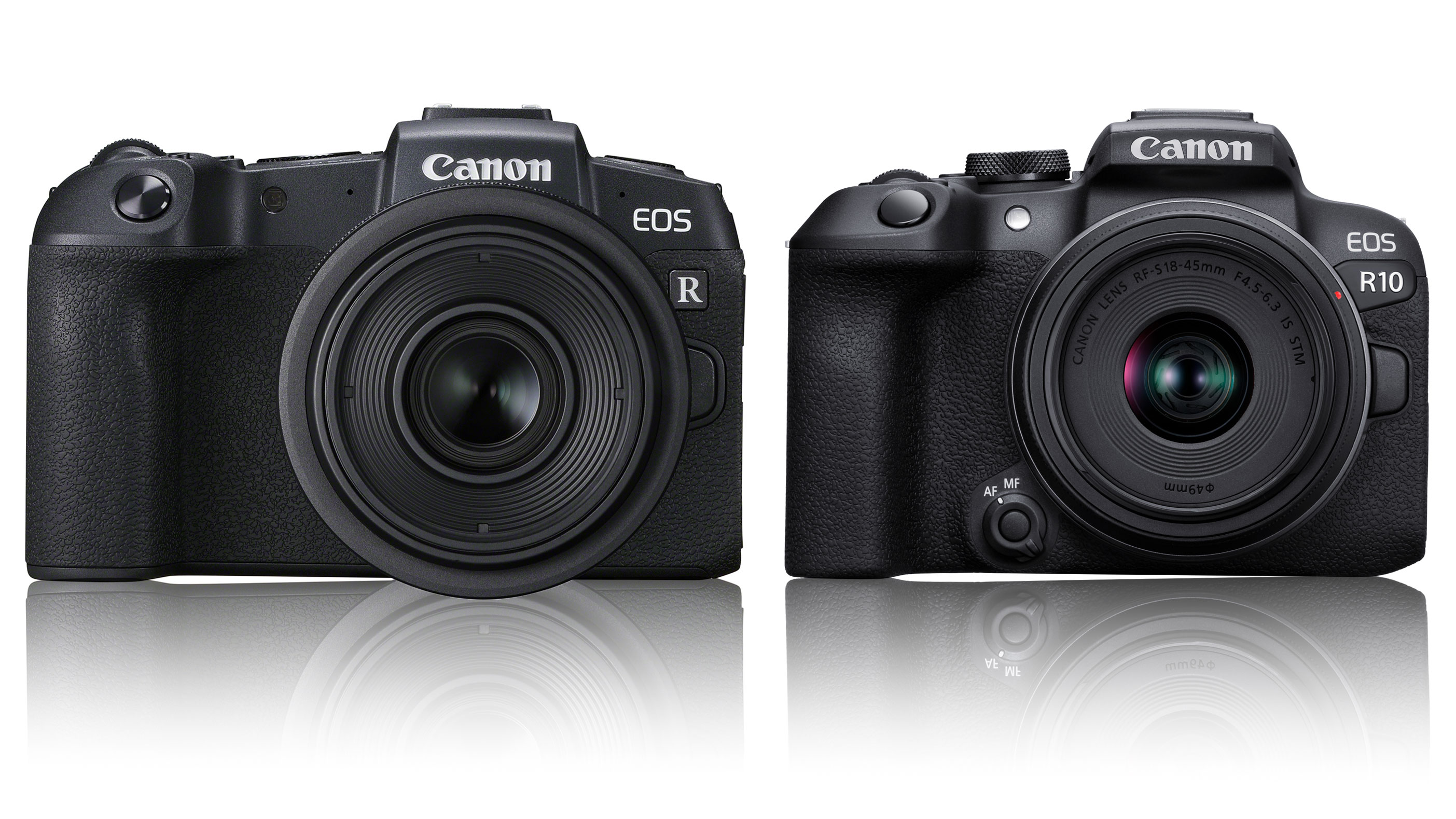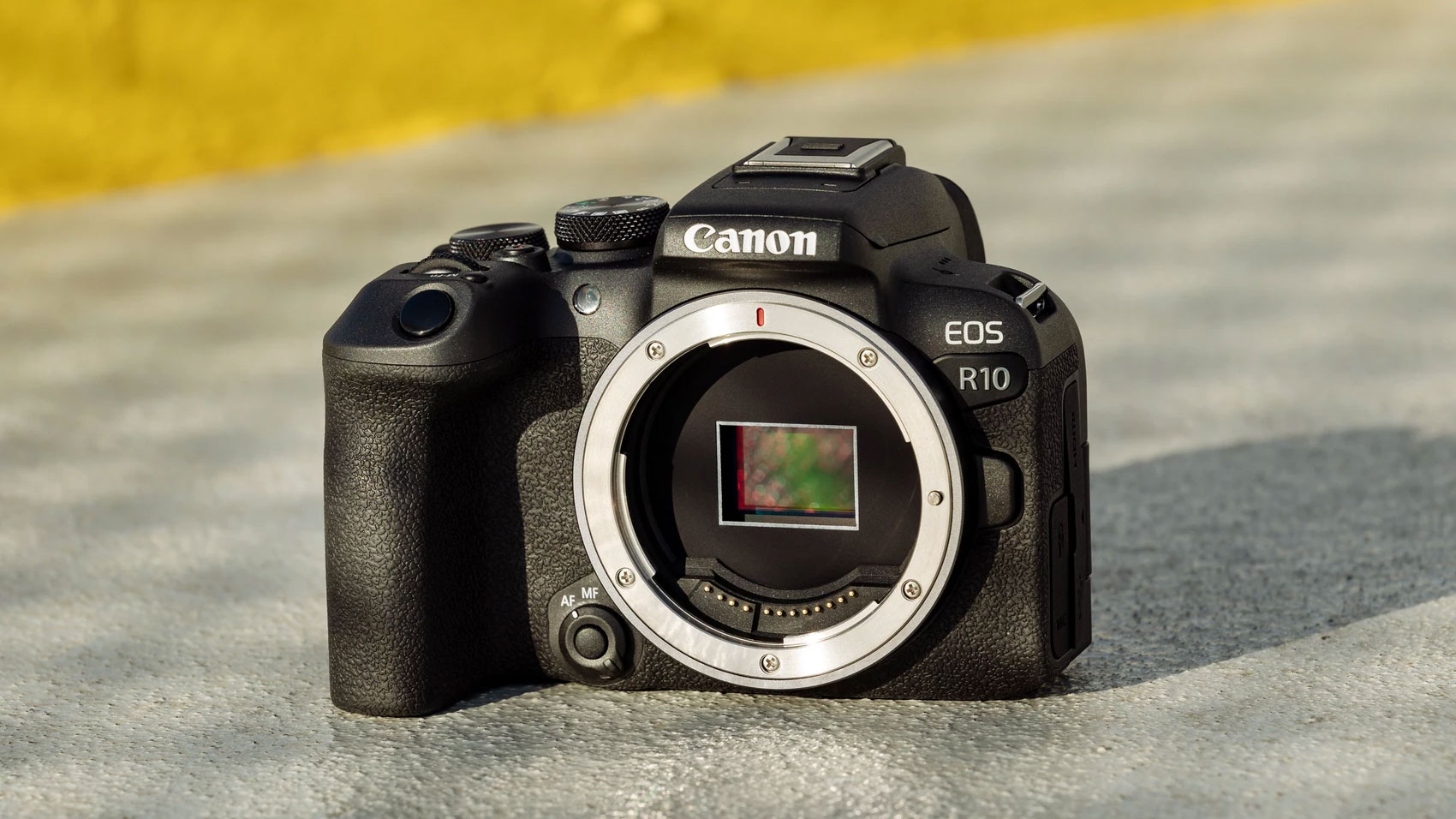Canon EOS R10 vs EOS RP
If you want an affordable mirrorless camera from Canon, is it better to go for the full frame EOS RP or the newer EOS R10?

Launched in March 2019, the Canon EOS RP is the most affordable model in Canon’s full-frame mirrorless camera line-up. However, Canon recently announced the EOS R10, an APS-C format mirrorless camera with a significantly lower list price, making it even more attractive to anyone on a budget.
There have also been some technological developments made since the RP was launched, which means that the R10 packs a few interesting features that the older camera lacks.
In this post, we’ll compare the key features of the Canon EOS R10 with the older RP to help you decide which is the better option for your photography and budget.
Canon EOS R10 vs EOS RP
Why you can trust Digital Camera World
1. Sensor
• Canon EOS R10: 24.2MP APS-C format (22.3 x 14.9mm) CMOS
• Canon EOS RP: 26.2MP Full-frame (35.9 x 24mm) CMOS
Although they are not vastly dissimilar in resolution, the full-frame sensor inside the RP is a little over 2.5x the size of the APS-C format sensor in the EOS R10. That means that the pixels on the RP’s sensor are larger and, all things being equal, it should have an advantage for dynamic range and noise control.
However, the R10’s sensor is newer and it’s joined by Canon’s latest algorithms and processing engine, which work in its favour, boosting image quality and noise control. We’ll have to wait until Canon sends a final production sample before we can see exactly how the two cameras compare in this respect.
The smaller sensor in the EOS R10 also means that the lenses mounted on it incur a 1.6x magnification factor. Consequently, a 100mm lens, for example, produces a framing similar to a 160mm lens on the RP. That can be an advantage for wildlife photography when you’re trying to get close to your subject, but it’s a disadvantage when you want to shoot a wide-angle landscape.
Another consequence of the R10’s focal length magnification is that when the framing is same, images from the R10 will have greater depth of field than the RP at the same aperture setting. That might be useful for a landscape but annoying when you’re shooting a portrait and you want to blur the background.
2. Continuous shooting
• Canon EOS R10: Mechanical shutter: 15fps, electronic shutter: 23fps
• Canon EOS RP: Mechanical shutter: 5fps, electronic shutter: n/a
The Canon RP’s credentials for high-speed shooting are distinctly underwhelming as it can only muster a maximum of 5 frames per second – although, to be fair, it can shoot at that rate until the memory card is full with JPEGs or for 50 raw files. If you want to use focus tracking, however, you have to drop to 4fps.
The R10, on the other hand, can shoot at up to 15fps for up to 460 JPEGs or 29 raw files with full focusing and metering capability when the mechanical shutter is in use. Engaging the electronic shutter boosts the rate to 23fps for up to 70 JPEGs or 21 raw files. That makes the R10 a much better choice for sport and action photography.
3. Video
• Canon EOS R10: 4K (3840 x 2160) up to 30p oversampled from 6K
• Canon EOS RP: 4K (3840 x 2160) up to 25p with 1.8x crop
Initially, the R10 and RP look reasonably well-matched with regards to the video capability, but checking the details reveals that the RP incurs a 1.8x crop when it’s set to shoot 4K video. That’s a tighter crop than using an APS-C format sensor causes. The R10 can also oversample from 6K to deliver better-quality 4K video. Also, unlike the RP, the R10 can shoot 4K video with 10-bit colour or 8-bit colour, which can be useful in tricky lighting or when you’re grading footage.
The R10 is also capable of shooting 4K video at 60p, which is great for creating 2x slow motion clips, but there’s a 1.6x crop on top of the 1.6x crop brought by the smaller sensor.
Another important issue to remember with the RP is that it switches to using contrast detection autofocusing in 4K video mode and that is much less decisive than the phase detection focusing that’s available with the R10 or when using the RP at lower resolutions or when shooting stills.
Both cameras have a port for connecting an external microphone, but only the RP has one to connect headphones. The R10 also has a multi-function type hotshoe that can be used to connect certain external microphones.
5. Autofocus
• Canon EOS R10: Dual Pixel CMOS AF II with up to 4,503 positions
• Canon EOS RP: Dual Pixel CMOS AF with up to 4,779 positions
While the RP has Dual Pixel CMOS AF with a few more focus points, the R10 has the latest version of the system plus the advanced algorithms that were developed for the top-flight EOS R3. This means it’s capable of detecting, focusing on and tracking humans, animals or vehicles and it uses a hierarchal approach to focus on the eyes, head or body when they are visible.
The RP has Face and Eye detection for humans, which is useful for portraits or event or sport photography, but the greater range of subjects that are detectable by the R10 make it more versatile.
Naturally, it’s also possible to take control of the focusing area and use a specific point or area for focusing with either camera.
According to Canon, the RP has better low-light capability as its autofocus is sensitive down to -5EV rather than -4EV in the R10.
6. Viewfinder and screen
• Canon EOS R10: Viewfinder: 0.39 inch 2.36-million-dot OLED, Screen: 2.95-inch 1.04-million dot vari-angle Clear View LCD II
• Canon EOS RP: 0.39 inch 2.36-million-dot OLED, 3-inch 1.04 million-dot vari-angle LCD
Although their viewfinders are the same size and have the same resolution, the R10’s refresh rate goes up to 120Hz (in Smooth mode), twice that of the RP’s viewfinder. That means the R10’s viewfinder should look a little smoother and movement will look more natural.
There are no differences to report with the regards to the screens, as both cameras feature vari-angle units with 1.04-million-dots. Canon refers to the R10’s screen as a 2.95-inch screen but it has the same metric measurements (7.5cm) as the RP’s screen, so it seems that Canon has started to round down imperial measurements rather than up.
7. Build and design
• Canon EOS R10: 122.5 x 87.8 x 83.4mm, 429g with battery and card
• Canon EOS RP: 132.5 x 85.0 x 70.0mm, 485g with battery and card
Overall, the RP is a little larger than the R10, but the difference isn’t as much as you might expect when you consider the bigger sensor size. The full-frame camera is also 56g heavier which is unlikely to make a noticeable difference in use. When you will see and feel a difference, however, is if you use Canon’s APS-C format RF-S lenses on the R10. These lenses have the same mount as their RF counterparts but they produce a smaller image circle that covers the smaller sensor size, so it means they are smaller and lighter.
The two cameras are pretty similar in their control arrangement with both having a mode dial on the right of the top-plate and twin control dials. However, the RP lacks the R10’s joystick on its back. This is noticeable loss when you’re moving the AF point around the frame.
8. Battery
• Canon EOS R10: Li-ion LP-E17
• Canon EOS RP: Li-ion LP-E17
Although they use the same rechargeable battery, Canon has clearly been able to make some dramatic power efficiencies with the R10, as CIPA testing shows you can expect to capture 430 shots (at 23°C) when the viewfinder is used and 260 shots when the screen is employed. The RP can only manage 250 shots on a single charge.
Canon EOS R10 vs EOS RP: conclusions
Unless you specifically want a full-frame camera, perhaps for greater control over depth of field or to see the true focal length of full-frame lenses, the R10 makes a better choice of camera in just about every respect. The fact that all of the R10’s enhancements come at reduced cost is almost too good to be true, but a camera’s sensor is often the most expensive component and the larger sensor in the RP has an impact on its cost.
However, at the time of writing, the range of Canon RF lenses designed for the EOS R10's smaller sensor is extremely limited. You can use full frame RF lenses on this camera, but the 1.6x crop factor limits their value. For now, the EOS RP has a far wider range of lens choices.
The best camera deals, reviews, product advice, and unmissable photography news, direct to your inbox!
Angela has been testing camera gear from all the major manufacturers since January 2004 and has been Amateur Photographer’s Technical Editor and Head of Testing for Future Publishing’s photography portfolio (Digital Camera Magazine, PhotoPlus: The Canon Magazine, N-Photo, Practical Photoshop, Photography Week and Professional Photography magazines, as well as the Digital Camera World and TechRadar websites). She is the founder of SheClicks - a community group that encourages and supports female photographers.






